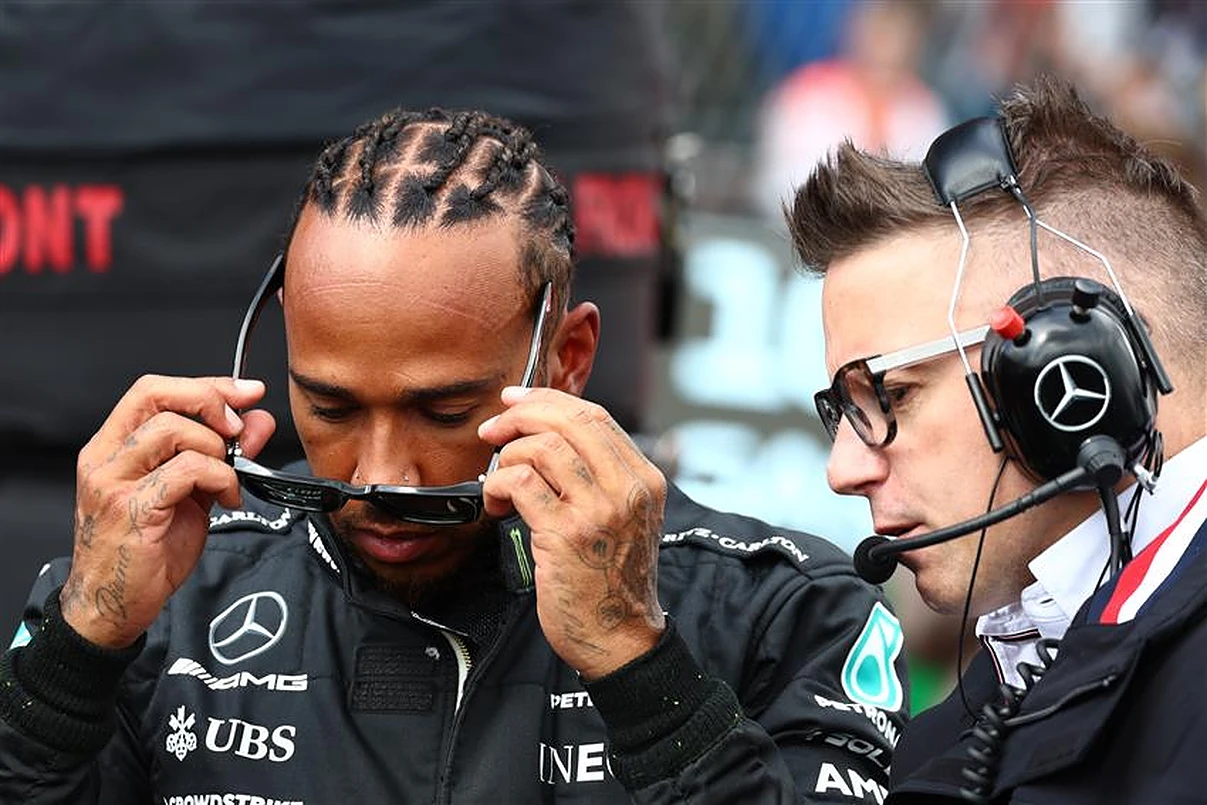British Formula 1 racer Lewis Hamilton’s aggressive driving style is thanks to several factors, from innovative tech and design of the Mercedes cars he drove for the team to a strict workout routine to keep himself in top form. The seven-time F1 racing champion is on an ongoing quest to beat Michael Schumacher to become the only F1 racing driver with eight championship wins. Speaking with fitness site Total Shape, Hamilton has spoken about the “extreme conditions” he — and other F1 racers — to resist the zero gravity forces he experiences when racing at extremely high speeds.
In August 2023, Hamilton made headlines after an interview with the press, where he explained his weight gain story after a summer break with his family. In the interview, Hamilton explained the need to follow an extreme diet to quickly and drastically lose weight in time to meet the specified weight limit for the Dutch Grand Prix. Due to his profession and preferences, Hamilton has long been a health-conscious racer and is very particular about the precise workout regime that he carries out with his beloved pet dog Roscoe for company.
The importance of weight in F1 racing
Despite being seemingly a sport that hinges on top-notch car design and engineering, weight is also a major factor for optimal Formula 1 performance. F1 drivers are constantly weighed to meet FIA regulations to ensure fairness and adherence. Racers are often weighed to gauge the weight a driver loses throughout a race and verify that the driver’s combined weight and the vehicle remain compliant with the FIA’s stipulated minimum weight threshold.
In a previous post, we wrote about one of Mercedes’ latest cars — the W14 — which was designed to be lightweight. During test drives, the W14 saw considerable performance gain from weight loss after changes to internal parts and the exposed carbon. Estimates saw a gain of up to three-tenths per lap from reduced weight. Due to the rule on the combined weight of drivers and their vehicles, reducing the weight of a car like the W14 also means drivers must adjust their weight to meet the requirements.
So, while weight is certainly a factor in improving racing performance, it’s also not all about constantly losing weight. This is especially true since drivers are often expected to shed pounds due to the extreme conditions and temperatures of being in a speeding car throughout a race.
On healthy and sustainable weight loss
While weight is a crucial component of F1 racing, it’s important to note that racers like Lewis Hamilton are professionals in their field and must undergo more extreme measures to comply with weight regulations from the FIA. Hamilton gradually transitioned into veganism by 2017 — and won four world championships on the back of this health shift — and you can certainly adopt a plant-based diet to allow for healthy and sustainable weight loss.
Also, signing up for weight loss groups near you can help guide and support you on your weight and wellness journey. These groups include in-person and physical experiences, including activities like live cook-alongs, workouts, and sessions. You can also access expert coaches to help hold yourself and other members accountable to achieve your goals. If you can’t find in-person groups or meetings, virtual workshops are also a convenient alternative for accessing health and weight solutions at home, on the move, or even while on holiday.
Another healthy way to lose weight is to commit to routine physical exercise. Many F1 racers rely on precise physical exercise to drive performance. The Williams Racing team, for example, recently partnered with fitness equipment supplier Life Fitness to support their racers’ and staff’s wide-ranging training needs. This included a fitness facility encouraging healthy lifestyles to help build power, balance, and stability for drivers and pit crew. As mentioned, you don’t have to adhere to strict and extreme workouts for your personal weight loss goals, but maintaining consistency is important to drive results.

